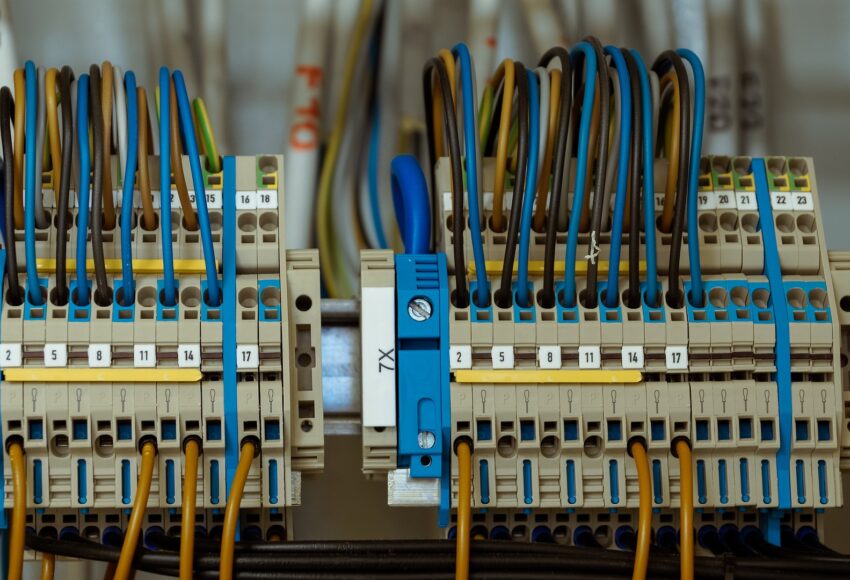
- October 17, 2023
- Control Tek
- 0 Comments
- Uncategorized
UNDERGROUND CABLING SYSTEM TYPES & BENEFITS
UNDERGROUND CABLING SYSTEM
Electricity for powering human habitations such as cities and rural areas is provided by thermal, nuclear, solar, wind or tidal energy plants everywhere in the world. While electricity is produced at a large-scale level in many centralized units, it is distributed to houses, shops and factories, which are located at a distance from the power plants, with the help of power cables.
Over long rural distances, overhead lines are used for electrical transmission. However, when a built-up area is approached, or if the power plant is in proximity to a city or town, there are many advantages to be gained by installing underground cables for the transmission system.
Wire and Cable for Underground Lines
There are a variety of ways electrical wiring can be run underground. Each method will dictate how deep to bury the cable. The method you use may depend on what is allowed or recommended by your local Code authorities, so always check with the local building inspections office to find out what is recommended in your community. Generally speaking, though, the National Electrical Code allows for three means of running underground circuits:
Methods of Underground cable laying
The effectiveness and efficiency of an underground cable system depend on proper cable laying, quality of cable joints and branch connections. The reliability of underground cable network depends to a considerable extent upon the proper laying and attachment of fittings. There are three methods of underground cable laying. The procedure followed in each method is as follows: direct laying, draw-in system and the solid system.
Direct laying
This method is the most popular as it is simple and cheap. This method requires digging a 1.5m deep and 0.45m wide trench which is then covered with a layer of sand. The cables are laid in the trench and covered with a 10 cm thick layer of sand. To protect against mechanical injury the trench is then covered with bricks and other materials. If more than one cable is required to be laid in a trench then a horizontal or vertical inter-axial spacing of 30 cm is provided to prevent mutual heating.
Draw-In System
In this method, cast iron or concrete pipes or ducts are laid underground with manholes at suitable positions along the cable route. The cables are then pulled into the pipes from the manholes. Usually, an additional pipe/duct is also provided along with the three cable ducts for carrying relay protection connections and pilot wires. Distance between the manholes should be such that pulling in the cables is easier. At corners or while changing the direction of route, radius of the
corners must be longer. The cables that are to be laid in this way need not be armoured but must be provided with the serving of hessian and jute in order to protect them when being pulled.
Solid system
Underground cables are laid in open pipes or troughs along the cable route. The troughs are usually made of asphalt, stoneware or cast iron. Asphaltic compound is used for filling the troughs once the cable is laid in position.
Benefits of underground cable laying
- Longer life – Underground cabling is unaffected by factors such as rough weather and strong sunlight, and this help it sustain over a longer period of time than overhead systems.
- Lower maintenance costs – Since underground cabling is not exposed, it does not have brave factors like wear and tear in the manner that overhead system does. Thus, underground cabling requires lower maintenance.
- Consistent, uninterrupted service – With overhead cabling, services may get disrupted in the event of a storm or an accident involving the snapping of cables by force. With underground cabling, these problems can be avoided easily.
- Optimum utilization of land – Overhead systems take up a significant amount of land which could be used for other purposes. However, underground transmission systems allow land to be used for other purposes by taking minimal space on the ground.
- Better safety – Overhead transmission systems can easily become a fire hazard in case of short-circuiting. In the event of a storm, the poles and transmission lines can also fall, causing damage to life and property. With underground cabling, such possibilities are eliminated.
- Aesthetic Superiority – Overhead cabling can negatively affect the aesthetics of a place, but underground cabling does not have this problem, as it is technically invisible to the eyes.


Leave a Comment
You must be logged in to post a comment.